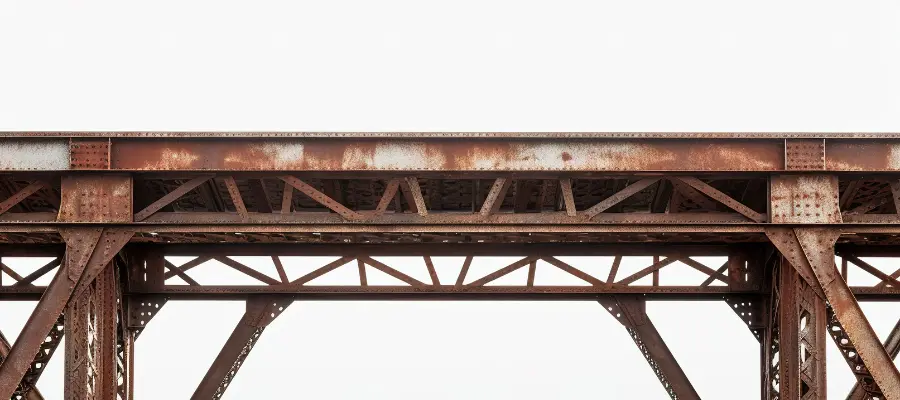Introduction
Beams are an important structural element in any construction, whether simple or complex. They are essential to conferring both protection and strength to any type of construction. Understanding beams and their functionality can be a great asset when you are thinking of building or renovating. In today’s Brick & Bolt blog, you’ll delve into the concept of beams, the main types of beams, how they work, and what to consider before opting to choose them. Understanding the basics can help you make wise choices that assure your project is safe and effective.
What is a Beam in Construction?
A beam is a structural element, responsible for bearing bending loads laid upon an open span and transferring them to the supports at the end of the member. The importance of a beam in construction is more than vital, carrying supporting floors, roofs, and other structural members—though not exposed to any type of bending and shear force. Beams can be made from different sorts of materials according to specifications, such as wood, types of steel, concrete, or a combination.
Different Types of Beam in Construction
There are numerous types of beams in construction, each designed to carry specific types of loads and serve different purposes. Here are the most common types:
- Simply Supported Beams
- Cantilever Beams
- Fixed Beams
- Overhanging Beams
- Continuous Beams
- Plinth Beams
- Truss beams
- I-beams
- Box beams
- T-Beam
- Compound Beam
Simply Supported Beams

Simply supported beams are the most widely utilised type of beam in building construction. Supported on both ends, they span the load, transferring it to the supports and creating upward forces that resist bending. Common applications include floor beams for buildings, bridges, and crane girders. However, these beams bend when a load is applied over the span. Their basic nature makes them a fundamental part of bridges, residential buildings, and small-scale industrial constructions.
Cantilever Beams
A cantilever beam is a special type of beam fixed at one end and projecting horizontally at the other. These beams are commonly used in balconies, towers, and bridges. This design has one end cast or anchored to a vertical support. Cantilever beams can be made of either concrete or steel.
Fixed Beams
A fixed beam is one that is fixed and restrained at both ends; it is also called a fixed-end beam, built-in beam, or restrained beam. Such a beam does not allow rotations at the supports and is very effective in case of resisting moment loadings. These are very common in continuous structures, like multi-span bridges and large buildings where no or only very minimal rotation occurs at the supports.
Overhanging Beams
The beam having two different supports and extended up to some distance at one end or both ends is called an overhanging beam. The end of the extended side of the beam does not have any support. It is used to balance the axial moment at the support of the column. It raises the life span of the column and beam reduces one sided load The general uses of overhanging beams are bridges, balconies, and canopies.
Continuous Beams
Continuous beams are made up of several beams joined together to provide a single, uninterrupted span over a number of supports. The key advantage of continuous beams is their ability to provide more even load distribution, resulting in reduced bending moments and increased stability in a structure. They can be used very effectively in structures with very large openings like bridges.
Plinth Beams
A plinth beam is a reinforced concrete beam that sits between the wall and its foundation. Its main job is to stop cracks from spreading from the foundation into the walls above if the foundation settles. Plinth beams help evenly distribute the wall’s load across the foundation, keeping everything stable and secure.
Truss beams
A truss beam is a framework structure, simply known as a truss, which supports loads by means of distributing forces through its interconnected elements. It is made up of straight members, which are arranged in the form of a triangle and connected together at the endpoints. The truss beam design is such that it ideally fits both compression and tension forces, making it ideal for large spans and heavy loads in various structures like bridges, roofs, and towers.
I-beams
This type of beam has two horizontal flanges connected through a vertical component; hence, the cross-section is in the form of the letter “I” It is very commonly used in the construction industry, and its excellent load-carrying capability makes it ideal for large construction projects.
Box beams
Box beams are stronger and more rigid as they distribute weight over four different surfaces. Their construction has a rectangular cross-section; hence, it’s also called a rectangular beam. When large loads and extensive spans are required, box beams are employed.
T-Beam
T-beams are a major type of beam in civil engineering, which look like the letter “T” from a side perspective, and are used in floors and roofs to prevent bending. When it comes to construction, they are more effective than rectangular beams.
Compound Beam
A compound beam consists of two basic beams joined by a strut, which is a third piece that connects them. This design is used when an exceptionally large span is required, providing the necessary support and stability for extensive openings.
Factors Influencing Beam Selection
The selection of beams is an important consideration in any structural design. The following are the major factors that need to be considered:

Load requirements
The load-bearing capacity of the beams is the first and most crucial consideration when choosing the right type of beam for your construction. The weight of the building, its furnishings, and along with th dead loads any live loads —such as occupants and furniture—must be supported by the beams. The size, shape, and material of the beams will determine how much weight they can support. This is also a key factor in obtaining a structural stability for your building.
Span Length
The distance between a beam’s supports is known as its span length. The longer the span, the more force the beam will be required to support. Generally, it is best to keep spans as short as possible to lessen the load on the beams. Yet, there may be cases where longer spans are required, such as in large open spaces. In such cases, larger beams may be necessary to add extra supports
Aesthetic Considerations
Generally, beams are one of the strongest structural features in a building and may highly influence its appearance. With certain design aims in mind, it will either be more desirable to obscure the beams or minimise their presence.
Cost Considerations
The cost of beams can vary significantly based on the material, size, and shape. It’s important to include the expense of beams in the overall building budget to ensure that construction stays on track financially.
Why Are Beams Important?
One way beams work is by making buildings, bridges, and other structures safe and sturdy. Without the beams functioning on these structures, the edifices may collapse from their weight—if not from an earthquake. They ensure the engineers and builders that, respectively, the right type of beams has everything built to last strong and long.
Conclusion
Beams are the most important entities in a construction site as they give strength and load-bearing capacity to different structures. For a common man, understanding different beam types is essential since it will have all the effects related to his house’s safety, cost, and maintenance. Beams are key components in a building’s structure; they support loads and transmit the same to the foundation, while at the same time ensuring that stability is achieved. Knowing all the types of beams will save you from costly errors and ensure your home renovation meets building standards. For expert advice regarding the selection and use of beams, you can consult a range of established construction companies in your locality. One of Hyderabad’s top construction firms is Brick&Bolt. They can work with you to find out what type of beam will serve the needs of your particular building, while still being responsive to concerns regarding loads and architectural design. To find out more about how your decisions in beams will cost or save you money in the long run, try our innovative building cost estimator tool.

